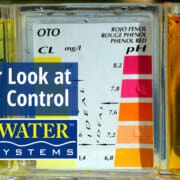What Happens When There’s Forest Fire Ash in the Swimming Pools? Understanding the Impact and Solutions.

Ash in Swimming Pools and the Negative Effects:
When natural disasters like forest fires occur, the resulting ash can affect various aspects of our surroundings. Provided it’s safe to be outside, one area of concern is swimming pools. Ash settling in a pool can cause several issues that pool owners need to be aware of. In this blog post, we will explore the impact of ash in swimming pools has and provide insights on how to mitigate its effects.
- Water Discoloration: Having ash in the swimming pool water can cause it to become murky and discolored. The fine particles present in the ash settle on the pool’s surface and can make the water appear cloudy or even brownish. This can be an unattractive sight and may deter swimmers from using the pool.
- pH Imbalance: Ash contains alkaline substances, which can disrupt the pH balance of the pool water. The increase in alkalinity can cause the water to become basic, leading to discomfort for swimmers and potential damage to pool equipment. Additionally, the altered pH levels can interfere with the effectiveness of chlorine or other sanitizers used in pool maintenance.
- Clogging of Pool Filtration System: The fine particles in ash can clog the pool’s filtration system, including skimmer baskets and filters. This hampers the filtration process, making it less effective in removing debris and maintaining water clarity. As a result, the pool may require more frequent cleaning and maintenance.
- Phosphates and Algae Growth: Ash can introduce phosphates into the pool water, acting as a nutrient source for algae. Phosphates, combined with sunlight and other factors, can promote the growth of algae in the pool. If not addressed promptly, this can lead to an algae bloom, making the pool water unsightly and potentially unsafe for swimming.
Solutions and Preventive Measures:
- Skimming and Vacuuming: Regularly skim the pool surface and use a pool vacuum to remove as much ash as possible.
- Filtration System Maintenance: Clean and backwash the pool filter as needed to ensure it operates efficiently and removes ash particles effectively.
- Water Testing and Balancing: Test the water regularly for pH, alkalinity, and phosphate levels. Adjust these parameters as necessary to maintain proper water balance.
- Shock Treatment: If the water becomes discolored or algae starts to grow, consider shocking the pool with an appropriate pool shock treatment to restore water clarity and kill algae.
- Consult a Professional: If the ash accumulation is significant or persistent, seek advice from a certified pool professional who can provide tailored recommendations.
Whether you’ve made the switch to an ionized pool, are still using chlorine as your primary sanitizer, or have opted for a saltwater chlorine pool, the information shared in this blog post applies to all pool owners. With pool chemistry, it’s much easier to maintain balance than it is to fix a problem.
Conclusion: Ash in swimming pools can have a range of effects on swimming pools, including water discoloration, pH imbalance, filtration issues, and potential algae growth. By understanding these challenges and taking proactive measures, pool owners can minimize the impact of ash on their pools. Regular maintenance, proper water testing, and prompt action will help ensure a clean, clear, and safe swimming experience.
Remember, if you require assistance or are uncertain about the best course of action, it’s always advisable to consult a professional pool service provider.












